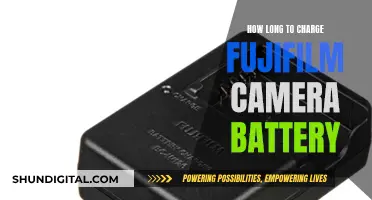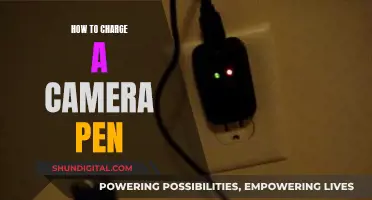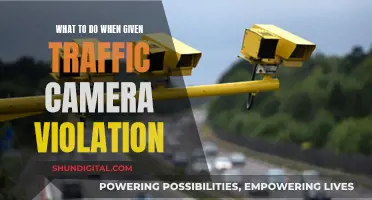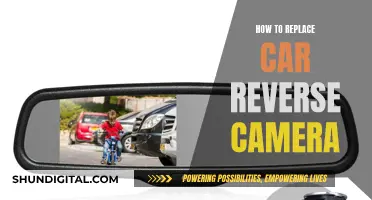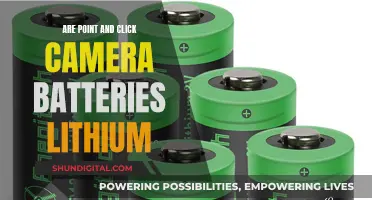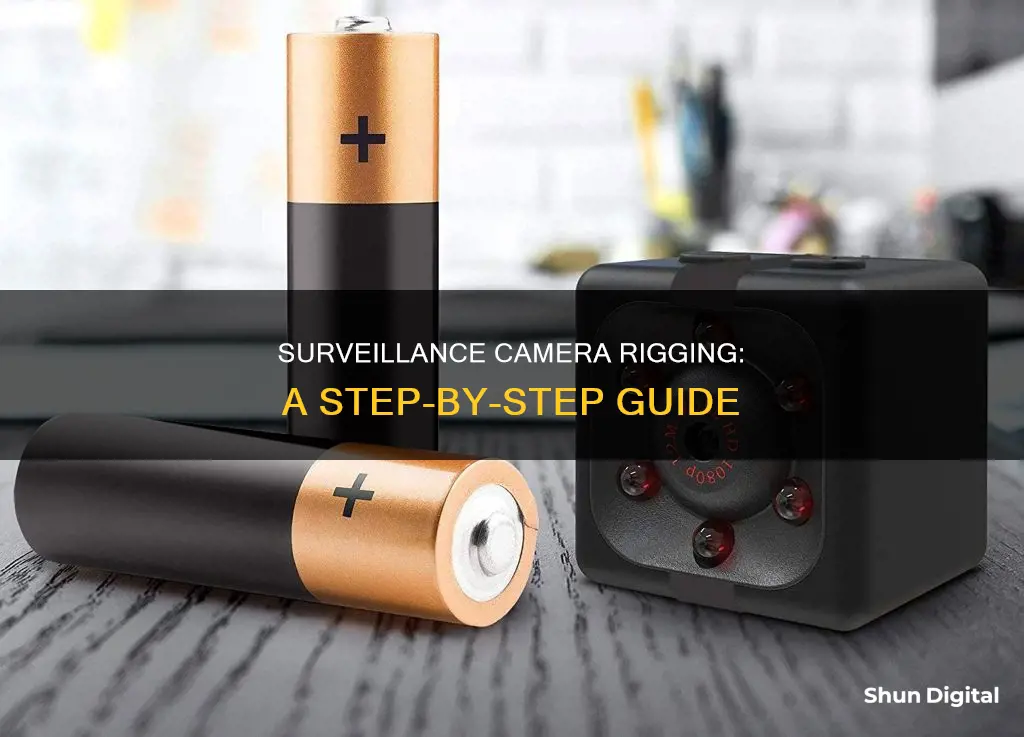
Rigging a surveillance camera can be a complex task, but with the right tools and knowledge, it is achievable. The process involves selecting and assembling various components, such as the camera body, lens, mounting system, power supply, and monitoring equipment. One crucial aspect is ensuring the stability and security of the camera, especially when mounted overhead, to prevent accidental falls. Additionally, the choice of camera and its placement plays a vital role, with options ranging from webcams and smartphones to dedicated security cameras, each serving different purposes. Understanding the specific requirements, such as indoor or outdoor surveillance, desired features, and budget, is essential for tailoring the setup accordingly.
What You'll Learn

Camera rigging equipment and safety
When rigging a surveillance camera, safety should be a top priority to protect both people and equipment. Here are some essential equipment and safety considerations for rigging a surveillance camera:
Equipment for Rigging a Surveillance Camera:
- Mounting System: Choose a sturdy mounting system such as a tripod with a boom arm or a ceiling mount. Ensure it can securely hold the camera's weight.
- Camera Angle and Height: Adjust the camera's tilt, pan, and zoom to capture the desired shot.
- Remote Control or Wireless Trigger: Consider using these to operate the camera from a safe distance.
- Stabilization: Use counterweights and anchoring to prevent movement or swaying. Specialized equipment like gimbals and steadicams can also enhance stabilization.
Safety Considerations:
- Weight Limits: Always consider the weight limit of the rigging equipment and the camera's weight. Don't exceed the specified limits.
- Secure Mounting: Ensure the camera is securely attached to the rigging system using high-quality hardware like clamps and safety cables.
- Safety Cables: Use safety cables to prevent the camera from falling in case of equipment failure.
- Clearance: Position the camera to avoid obstructing walkways or exits.
- Training: Ensure the camera operator is trained in rigging and safety procedures, including recognizing equipment failure.
- Regular Inspections: Regularly inspect the rigging equipment for any signs of wear and tear.
- Backup Methods: Use backup methods to mount the camera, such as safety lines or sandbags, to protect both the crew and equipment.
- Battery Power: Ensure sufficient battery power before placing the camera in a hard-to-access location.
By following these equipment and safety guidelines, you can ensure a successful and secure surveillance camera rigging.
Smart Focus: How Cameras Autofocus with Precision
You may want to see also

Camera mounting options
When rigging a surveillance camera, it is important to consider the location and angle of the shot you want to capture, as well as the weight and stability of the camera. Here are some common camera mounting options to consider:
Tripods and Boom Arms
Tripods with boom arms are ideal for suspending smaller cameras from above and can be adjusted to capture different angles and perspectives. This method provides flexibility in terms of height and positioning, making it suitable for a variety of applications.
Ceiling and Wall Mounts
Ceiling and wall mounts are designed to securely attach surveillance cameras to ceilings or walls, providing a stable platform for capturing footage. This option is ideal for larger cameras and can be used in both indoor and outdoor settings. Ceiling mounts are particularly useful for capturing footage in large, open spaces such as warehouses or studios.
Drone Mounting
Drones offer a unique perspective and can capture footage in hard-to-reach locations. They are highly manoeuvrable and can provide a bird's-eye view of the area being monitored. However, drones require skilled operators and can be expensive to rent or purchase.
Security Camera Brackets
Security camera brackets are essential for ensuring your camera is positioned correctly and capturing video from the right angle. Different types of brackets are available, including wall mount brackets, ceiling mount brackets, and pole mount brackets, each designed to meet the specific needs of your surveillance system.
Custom Mounts
In some cases, you may need to create a custom mount for your surveillance camera, especially if you are using a phone or tablet as a security device. Custom mounts can be designed to fit specific locations and ensure that the camera covers the desired areas effectively.
Game Camera Battery Life: How Long Do They Last?
You may want to see also

Camera positioning and angles
When rigging a surveillance camera, careful consideration should be given to its placement and angle. Here are some key guidelines and strategies for optimal camera positioning and angles:
- Identify assets and choke points: Position cameras to cover assets, such as a cash register or safe, and choke points, like entryways, to capture potential threats and get clear shots of intruders.
- Camera height: Mount cameras at a height that makes it difficult for intruders to tamper with them. A height of around 10 feet or higher is recommended to prevent easy access without a ladder.
- Front door coverage: The front door is a common entry point for burglars, with 34% of them entering through the front of a building. Place a camera about 7 feet up or higher, pointing downward at an angle to capture facial images.
- Side and back doors: If burglars cannot access the front door, they may target side or back entrances. Position cameras to cover these areas, especially if there are windows adjacent to the doors.
- Window coverage: Around 23% of burglars enter through first-floor windows that are not facing the street or are at the back of the house. Angle cameras to cover these windows, and consider placing a visible indoor camera on a table, looking out to deter intruders.
- Garage coverage: 9% of burglars enter through an adjacent garage. Point a camera at the garage door to monitor this area.
- Lighting considerations: Avoid positioning cameras where there is too much light or reflections, as it can affect the recorded footage. Sudden changes in lighting conditions can also impact image quality.
- Camera angle optimization: Ensure the camera's field of view (FoV) is optimized. Take photos of the approximate FoV and intended mounting location, and prepare a map marking each camera's position to ensure effective coverage.
- Camera type selection: Choose between fixed cameras for specific areas, mechanical PTZs for large areas with an operator, and panoramic cameras for small areas without an operator.
- Avoid blind spots: Test the camera's view to ensure it covers the desired area effectively. Avoid mounting cameras mid-wall, as it creates blind spots on each side.
- Trap surveillance pattern: Strategically place cameras in a trap surveillance pattern to capture movement between areas of a home without invading privacy.
Surveillance Camera Systems: DIY Installation and Setup
You may want to see also

Camera security and remote access
When it comes to camera security and remote access, there are a variety of options and features to consider. Here are some detailed instructions and tips to help you set up and maximise the potential of your surveillance system:
Choosing the Right Equipment
First, you'll need to decide on the type of camera system you want to use. You can opt for a dedicated security camera, such as the Nest Cam, or repurpose an old device like a phone, tablet, or webcam. If you go for the latter, make sure you choose a suitable location, ensuring it has power and a stable Wi-Fi connection. You may also need to install additional software or apps to enable certain features, such as motion detection and remote viewing.
Remote Access
One of the key advantages of modern security cameras is the ability to monitor your property remotely. Look for cameras that offer smartphone apps or web-based portals, so you can check in from anywhere. Some cameras, like the TP-Link Tapo Indoor 2K Wi-Fi Security Camera, even provide instant alerts and remote access via a user-friendly app. This feature is especially useful if you're away from home and want to keep an eye on things.
Field of View and Positioning
When installing your camera, consider the field of view and ensure it covers the desired areas. Pan and tilt functionality, like that offered by the Night Owl security camera, can be useful for capturing multiple angles. Also, think about lighting conditions and whether you need features like night vision or floodlights to improve visibility in low-light environments.
Two-Way Audio
Another useful feature to look out for is two-way audio. This allows you to communicate with people on the other end of the camera, which can be ideal for welcoming guests or deterring intruders. The Arlo Essential Outdoor Camera, for example, offers noise-cancelling two-way audio so you can hear and speak clearly with visitors.
Storage Options
Finally, consider the storage options for your camera footage. Some cameras offer local storage on microSD cards or hard drives, while others provide cloud storage plans, often for a monthly subscription fee. The type of storage you choose will depend on your specific needs and budget.
By following these instructions and considering the available features, you can create a robust and convenient surveillance system tailored to your requirements.
How to Insert Batteries into Your FinePix S8200 Camera
You may want to see also

Camera stabilisation techniques
Camera stabilisation is essential for capturing high-quality, sharp images, especially when using slower shutter speeds or long focal length lenses. Here are some techniques for achieving stable surveillance camera footage:
Tripods and Monopods:
- Tripods provide a stable platform for your camera, but they need to be rigid and heavy, especially when supporting a heavy camera with a long telephoto lens.
- Carbon-fibre tripods offer a balance between weight and stability and often include a hook to attach a hanging weight for added stability.
- Monopods are more portable but offer less stability as they rely on your body as one of the legs.
Bean Bags:
- Bean bags are small, portable, and excellent for draping over surfaces like car windows or flatbed truck rails.
- Some bean bags have a metal plate to attach a ball head or gimbal for panning, but this may be redundant as the primary purpose is to provide a stable platform.
Pan-Tilts, Gimbals, and Ball Heads:
- Ball heads are the most convenient and versatile option for rotating and fixing your camera in place.
- Ensure the ball head is rated for the weight of your camera and lens and has a tensioner to hold the camera in position while allowing for easy rotation.
In-Camera Stabilisation:
- In-body image stabilisation (IBIS) compensates for camera movement by moving the sensor along various axes.
- IBIS is effective for both video and photography and can provide up to 8 stops of stabilisation.
Lens Stabilisation:
- Lens stabilisation counteracts camera movement by moving the glass elements within the lens.
- Lenses with this technology have sensors to detect camera movement and adjust the lens elements accordingly.
- Lens stabilisation is very effective, often providing 4-6 stops of stabilisation, but it can make the lens more expensive.
External Gyroscopes:
Attaching an external gyroscope to the camera body can stabilise the entire camera externally, which is useful when shooting from a moving vehicle.
Steadicam Systems:
Steadicam systems isolate the camera from the operator's body using a harness and a camera boom with a counterweight, providing smooth and stable footage.
Drones:
- Drones offer a unique perspective for capturing overhead footage and can access hard-to-reach locations.
- However, they require skilled operators and can be expensive.
DIY Camera Stabilisation:
For a custom and inexpensive solution, you can build your own camera stabilisation system using a Raspberry Pi or Arduino processor as the controller, along with a camera module and a free app like MotionEye.
These techniques can help you achieve stable and sharp surveillance camera footage, ensuring clear and usable images or videos for your specific application.
Blender Camera Focus: What You Need to Know
You may want to see also
Frequently asked questions
You can use an old phone or tablet, a computer webcam, or a dedicated security camera. If you're using a phone or tablet, make sure it's mounted securely and has a power source and a stable Wi-Fi connection.
Place at least one camera near your front door, preferably a video doorbell with two-way audio. Also, consider cameras that cover your garage, side yards, backyard, and indoor main entrance and rooms with valuables.
The number of cameras depends on the size and layout of your home. As a general guideline, consider having one doorbell camera, two outdoor cameras for the front and back, and two indoor cameras for main entrances and valuable items.
Look for cameras with a resolution higher than 1080p, optical zoom, AI detection, adjustable video clip duration, local storage (microSD card), a wide field of view, and sound detection.
You can choose between wired and wireless security cameras. Wired cameras have a consistent power source, while wireless cameras use rechargeable or disposable batteries. Consider the convenience of installation and the potential need to recharge batteries frequently.


